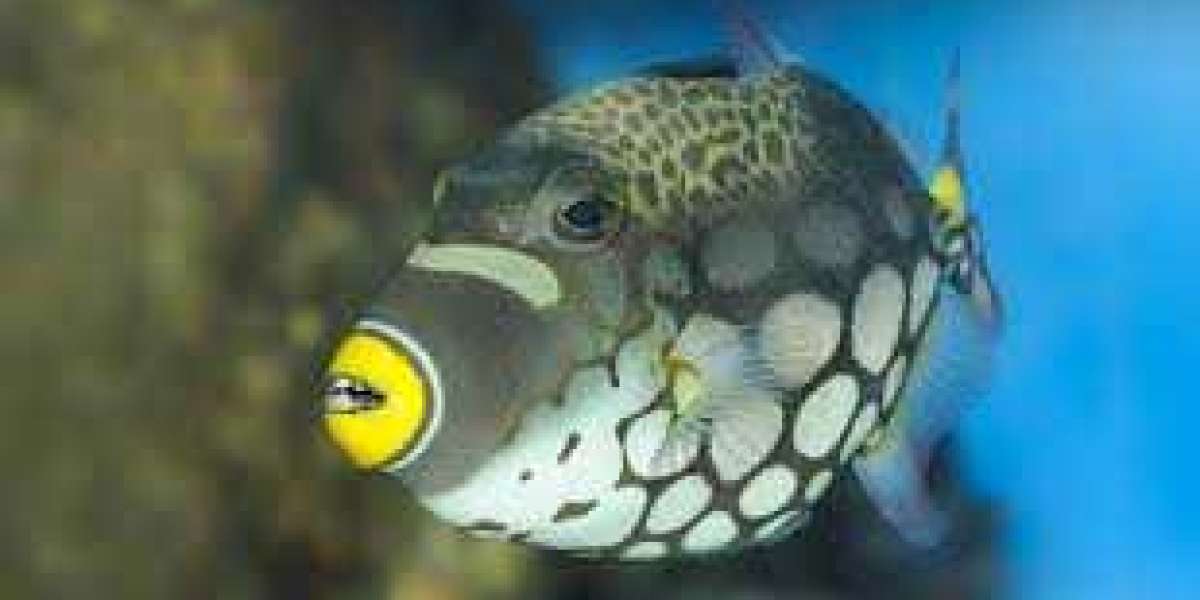Whether you're a passionate angler, a curious aquarist, or simply exploring the world of ichthyology, understanding the key differences between freshwater and saltwater fish identification is crucial. Accurately identifying fish species isn’t just a fun hobby—it’s also vital for conservation, regulatory compliance, and sustaining aquatic ecosystems.
With over 34,000 known fish species globally, including more than 15,000 freshwater species and approximately 20,000 saltwater species (FishBase, 2023), fish identification can be both challenging and rewarding. This guide will walk you through the key differences and nuances, backed by expert research, so you can become proficient in identification whether you're in a river, lake, reef, or open ocean.
- Understanding Habitat: The Foundational Difference
Freshwater Fish:
Freshwater fish reside in rivers, lakes, ponds, and streams where the salt concentration is less than 0.05%. Common freshwater fish species include:
- Largemouth Bass (Micropterus salmoides)
- Bluegill (Lepomis macrochirus)
- Catfish (Ictalurus punctatus)
These environments are generally more susceptible to temperature and oxygen changes, influencing how fish look and behave.
Saltwater Fish:
Saltwater fish live in oceans and seas, with average salinity levels around 3.5%. Notable saltwater fish species include:
- Clownfish (Amphiprioninae)
- Mahi-Mahi (Coryphaena hippurus)
- Tuna (Thunnini)
Saltwater species have evolved to adapt to high salinity and deeper, more dynamic environments. These habitats can influence everything from coloration to body size and scale structure.
- Physical Characteristics Used
While there are overlapping traits between freshwater and saltwater fish, some physical features can help you distinguish them during these identification.
a. Coloration
- Freshwater Fish: Typically duller in color (browns, greens, grays) to blend into muddy or vegetated waters. For example, the Northern Pike has camouflaging green hues with light spots.
- Saltwater Fish: Often vibrant with neon colors (blues, oranges, yellows) to communicate and camouflage in coral reefs. The Mandarinfish and Royal Gramma are examples of vividly colored saltwater species.
b. Body Shape
- Freshwater Fish: Generally more robust or thicker-bodied to withstand stronger currents and sediment-laden waters.
- Saltwater Fish: Streamlined or elongated to maneuver quickly in larger, open waters.
c. Scale Structure
- Saltwater fish tend to have thicker, more protective scales due to the presence of abrasive salt and predators.
- Freshwater species often have thinner scales, as the environment is less erosive.
- Behavioral and Physiological Adaptations
a. Osmoregulation
Freshwater fish constantly absorb water through osmosis and excrete excess water via their kidneys. Saltwater fish, on the other hand, lose water and must drink seawater, excreting salt through specialized cells in their gills.
These differences are crucial in these identification because certain anatomical features (like gill structures and kidney size) reflect their habitat.
b. Diet and Feeding Habits
- Freshwater Fish: Often feed on insects, larvae, smaller fish, and plants. Their teeth are adapted for crushing or scraping.
- Saltwater Fish: Many are predators that feed on smaller fish, crustaceans, and invertebrates, requiring sharper or more pronounced teeth.
- Geographical Distribution and Species Diversity
Saltwater fish dominate the oceans, covering about 70% of Earth's surface, resulting in greater biodiversity. Coral reefs, such as the Great Barrier Reef, host more than 1,500 species of saltwater fish alone.
Freshwater systems, although smaller in area, are more fragmented and isolated, leading to rapid speciation and endemism. For instance, Lake Malawi in Africa hosts over 700 species of cichlids, most found nowhere else on Earth (National Geographic, 2022).
Understanding these geographic distributions aids identification for ecological studies and conservation efforts.
- Tools and Techniques for Accurate Fish Identification
a. Field Guides and Mobile Apps
- iNaturalist and FishVerify are excellent for real-time identification.
- Printed guides like Peterson Field Guide to Freshwater Fishes or Reef Fish Identification: Florida, Caribbean, Bahamas remain trusted resources.
b. Photographic Identification
Underwater photography can be used to document and later identify species using pattern recognition software or comparison with taxonomic databases.
c. DNA Barcoding
For highly similar or juvenile fish where external traits aren’t clear, DNA barcoding is used to identify fish species. It’s increasingly used in research and commercial fishery regulation to prevent mislabeling.
- Commercial Importance and Regulatory Considerations
In both commercial fishing and recreational angling, identification is critical for adhering to regulations set by agencies like:
- NOAA Fisheries (USA)
- ICCAT (International Commission for the Conservation of Atlantic Tunas)
- Local fishery boards and conservation councils
Misidentification can lead to overfishing, legal consequences, or the depletion of vulnerable species like the Atlantic Bluefin Tuna or endangered freshwater sturgeon.
In the aquarium trade, improper identification may result in poor tank conditions or incompatibility between species, affecting fish health and hobbyist experience.
- Visual Aids and Examples for Learning
Let’s look at a few quick comparisons to make the identification easier:
Feature | Freshwater Fish (e.g., Bass) | Saltwater Fish (e.g., Snapper) |
Color | Earth tones | Bright, vivid colors |
Environment | Rivers, lakes | Oceans, reefs |
Scale thickness | Thinner | Thicker |
Body shape | Stocky | Streamlined |
Diet | Insects, larvae | Crustaceans, fish |
- Why Fish Identification Matters in Conservation and Research
Proper identification allows scientists and conservationists to:
- Track invasive species (like Lionfish in the Atlantic)
- Monitor endangered species (like Mekong Giant Catfish)
- Study climate change impacts on marine life
- Regulate sustainable fishing practices
Misidentification, on the other hand, can result in improper data collection, flawed environmental impact studies, and biodiversity loss.
- Commercial Keywords and SEO Takeaways
In today’s digital age, the term "fish identification" is not just a keyword—it’s a necessity for:
- Eco-tourism companies offering guided fishing tours
- Hobbyists looking for aquarium compatibility
- Educational platforms providing ichthyology content
- Fishing gear retailers targeting specific regions and species
- App developers offering AI-based identification tools
Using these SEO-relevant keywords helps enhance online visibility while delivering helpful content aligned with Google’s E-A-T (Expertise, Authoritativeness, Trustworthiness) framework.
FAQs
1. Can freshwater fish survive in saltwater or vice versa?
Generally, no. Most species are adapted to one type of water due to osmoregulation. However, a few like salmon and eels are anadromous and can migrate between both.
2. Is color always a reliable way to identify saltwater vs. freshwater fish?
Color can help, but it's not definitive. Some freshwater fish can be colorful, especially during mating. Use multiple traits for accuracy.
3. Which is harder to identify: saltwater or freshwater fish?
Saltwater fish are often more diverse, especially around coral reefs, making them harder to identify without a guide.
4. Are there apps that help with identification?
Yes! Apps like FishVerify and iNaturalist use image recognition to help identify species with considerable accuracy.
5. Why is identification important for anglers?
It helps avoid catching protected species, ensures compliance with fishing regulations, and enhances the angling experience.
Conclusion
Whether you're fishing in a tranquil lake or snorkeling along a coral reef, being able to distinguish between freshwater and saltwater species through accurate identification opens the door to a richer understanding of aquatic life. By learning to read their physical traits, understanding their habitats, and using modern tools, you can become an informed, responsible, and skilled observer of the underwater world.
So, the next time you spot a fish—will you know if it calls the ocean or the river its home?








